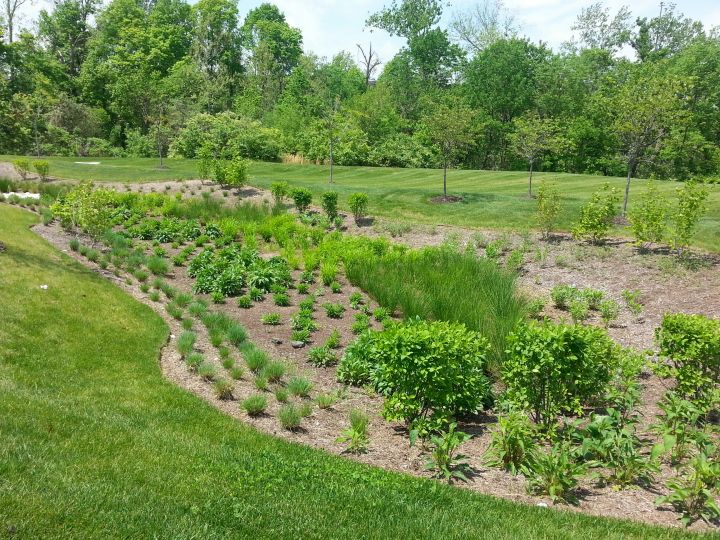
Bioretention System
Bioretention systems are vegetated depressions in the landscape designed to infiltrate stormwater into the subsoil, and/or hold it for a period of time to settle out pollutants and allow some uptake by plants. Bioretention basins can be sited in a wide range of different locations and settings. The terms “rain gardens” and “stormwater bumpouts” are often synonymous with bioretention systems. By co-locating stormwater management with visually appealing landscaped areas, designers can maximize the remaining area available for building.

Bioretention basin section view.
Image Credit: Canyon Region Water Authority, 2018
Considerations: The size of the area draining to the system can influence its effectiveness at providing water quality treatment and groundwater recharge. Small-scale bioretention systems are preferred for meeting these standards.
Cost: Bioretention systems require regular maintenance to maintain their functional and aesthetic value. Designers can lessen the degree and complexity of the required maintenance regime through careful consideration of the soil specification and use of native plants. Maintenance costs can be offset by lower upfont construction costs as bioretention systems are typcically smaller than equivalent traditional detention systems.
Maintenance: Bioretention systems require frequent inspections, debris and sediment removal, and landscape services for vegetation management.
